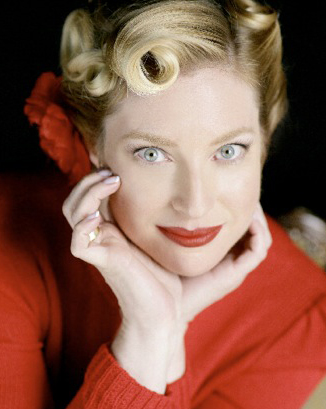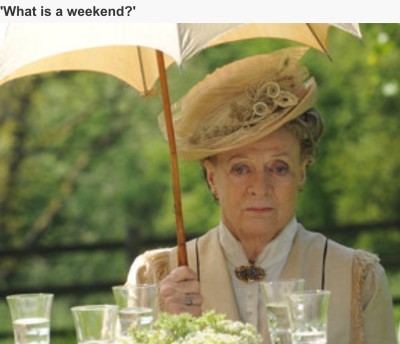
The Modern Butlers’ Journal volume 11, issue 6
International Institute of Modern Butlers
 Message from the Chairman
Message from the Chairman
We are often asked why we have made people skills the focus of the Institute, rather than the more normal hands-on skills of the butler (which we do, of course, also teach).
The answer is simple, and moves beyond the fact that these soft skills are the central skills needed by employers that most often cause failure in any butler-principal relationship.
The truth is that in an absence of an understanding of the fundamentals of a subject, people fall back onto holding fixed ideas tightly to their bosom as if they were the last ideas left in the world. Fixed ideas, heavy insistence that something should be done in a certain way based on precedent or the opinion of some authority, show that understanding of the fundamentals and thus judgment of the subject are sorely missing in the person forwarding such ideas.
Espousing “knowledge” with great certainty to the uninitiated may well be a fun game to play, one that strokes the ego and builds status, but unfortunately, the ramifications go beyond the small circle of influence of the professor of the opinions: such fixedness repeated too widely will lose us the technology of our profession.
At a time when the sciences have advanced in spectacular fashion on many fronts, the humanities continue to espouse primitive levels of understanding of the mind and spiritual abilities of man. Endless pronunciamentos by the learned have, to date, left us with no clear idea of either mind or spirit.
Why is this of concern to butlers in general, and the training of butlers or other service professionals in particular? Simply put, service is built solidly on the foundation of human relationships, which includes (we hope) a prodigious use of our minds, and hopefully, some idea that we are spiritual beings and have certain skills as spiritual beings that can be used to enhance the lives of our principals and guests, as well as colleagues.
If I speak untruths, then roll on the great wave of “butler robots” that science is striving so hard to create for us—a mechanistic and ordered society where mankind is an impediment to be tolerated in part. For surely, these robots will win the day: their knowledge will be as firmly fixed as the software engineers who write their code; and they, indeed, unless we change our understandings and skill levels, will be superior to those annoying, fussy, and fickle hominid butlers who used to strut their stuff until the mid-21st Century.

How fast technology moves us forward. Now if only the humanities could catch up!
Butlers in the Media
No shortage of new and old instances of the butler concept in society this past month:
- A Mississippi river boat now offers butler service;
- The Butler is a peephole that provides the modern equivalent of the butler of old controlling traffic at the front door, and which would make life easier for butlers-on-the-go, whether at the principals or the butler’s own home; the company is seeking crowdfunding, if you want to get in on the ground floor (no pun intended);
- The Smart-Home Butler is a patent by Google for a cuddly interface to the smart home, which would listen for trigger words and subsequent spoken instructions, and which would be capable of responding not only with speech but also actions and expressions: For instance, the robot in the form of a teddy bear might “open its eyes, lift its head and/or focus its gaze on the user,” to convey interest in what they were saying, furrowing its brows or even scratching its head to communicate curiosity;
- Along the same lines, we have iButler software for phones;
- Butlers are being sought in various venues, including an Oxford College, a Butler/PA through Craig’s list, and Butler/PA’s for a car dealership!
- In similar vein is the demand that a celebrity “butler up,” meaning hire a butler, instead of opening the door herself—thereby introducing a new idiom into the English (or should we say “American”?) language;
- A butler at the White House refused a joint from a rapper, it transpires; and the long-term butler for the governor of Louisiana wants his life sentence for murder reduced. If that leaves you scratching your head, state prison trustees are employed by the state, and one of the positions filled by prison labor is that of butler;
 Whatever happened to any sense of standards, decorum, and pride in personal appearance? This individual allows this picture of himself to be published in the media, trumpeting the fact that he is a butler and has successfully sued a dentist for botched work on his veneers. Wouldn’t a shave at least have been in order?
Whatever happened to any sense of standards, decorum, and pride in personal appearance? This individual allows this picture of himself to be published in the media, trumpeting the fact that he is a butler and has successfully sued a dentist for botched work on his veneers. Wouldn’t a shave at least have been in order?- Lovely story of going beyond the call of duty; interesting take from a retired butler turned actor; information on working for the British Royal Family (please feel free to ignore the paper’s childlike and predictable focus on the starting salary); interesting information about life in service 110 years ago in the real Highclere Castle, shoot location and backdrop for the Downton Abbey TV series.
 Letters to the Editor
Letters to the Editor
“With reference to the recent fruit- and soap-carving images and articles, here are some great books on food carving from my collection, which have served me well: Garnishing and Decoration by Rudolf Biller, Chinese Appetizers and Garnishes by Huang Su-Huel, The Creative Art of Garnishing by Yvette Stachowiak, The Fine Art of Garnishing by Jerry Crowley, Garnishing-The Basics and Beyond by Constance Quan and Garnishing – A Feast of Your Eyes by Francis Talyn Lynch. BR
Placement
In line with our drive to create apprenticeship opportunities for butler trainees, we are pleased to collaborate with Blenheim Palace in offering apprenticeships for two candidates each year. For this first year, only those with permits to work in England can be considered.
Seeking Trainee Butlers at Blenheim Palace, England
Home to the Duke & Duchess of Marlborough, Blenheim Palace operates one of the most formal and historic households in the country. With an unbroken line of butlers for over 300 years, two Trainee Butlers are now being recruited to develop skills in a life-changing and practical learning environment.

The successful candidates will work and reside in Blenheim Palace for 8 months starting from August 2015, working alongside the Duke & Duchess of Marlborough’s Butler, who will guide the candidate through an in-house syllabus of formal Butlership. The course, which concludes in March 2016 with an Awards Ceremony, is an in-depth introduction to life as a Butler, based around the following core components:
- Butler etiquette
- Management of front of house
- Management of Butler’s Pantry and below-stairs, including the care of silver, glass, porcelain, wood and fabrics
- Conservation/restoration awareness
- Care of wine and cigars
- Dining room service, including laying formal dining tables
- Production of homemade liqueurs and dessert preserves
- Intensive Spring-Cleaning programme
No previous experience is required, as the role is a learning one, although a friendly and positive attitude, an impeccable appearance and a willingness to learn are essential. In return, the candidates will gain an unparalleled experience within a vibrant and fascinating family home, and Britain’s Greatest Palace. Undoubtedly, this will set a personal benchmark in standards for the candidates careers. The positions come with a competitive salary. A current and valid driving license is essential. The candidates must also have a valid work permit for the United Kingdom in order to qualify for these positions.
To apply, please contact the Palace’s Butler via email: sduckett @ blenheimpalace.com, including your current resume/CV with recent photo and any written references.
Let’s Talk about Mixology, Part 1
by Amer Vargas
Gin & Tonic
“These are great times for tonic water lovers,” preaches a famous tonic brand advert on TV in Spain.
Indeed so. The advert refers to the welcome return to trendy of one of the easiest spirit+mixer mixes one can think of: the gin and tonic or “gin-tonic” to friends. In the last seven years, this combination has been reborn like the Phoenix to the point that many new gin brands have appeared on the market, many of them of (so-called) premium quality, each providing its particular flavors and bouquets to the final drink, thus delivering a special drinking experience.
Today we will focus on how best to prepare a gin-tonic.
First of all, let’s review the tools. Other than the jigger to measure the gin, a cocktail spoon, tongs for the ice and the citrus peeler, small pincers are also needed to add the final lime or lemon garnish, and any other garnishes desired. The most important tool is the glass, of course: choose one with a deep bowl and wide mouth to allow all ingredients to fit in and the drinker to sniff the bouquets whilst sipping the drink. To this purpose, a low ball (rather than a high ball) glass accomplishes the objective, but a big bowl-big mouth stem glass adds the advantage of the possibility of holding the glass by the stem, thus preventing the drink from warming up by being held in the hand.
Regarding the ingredients, ice is as important as the gin and the tonic. Rather than homemade ice, use commercial ice from a convenience store or a gas station. This sort of ice is produced at much lower temperature than the domestic counterpart and is made with purified water, which ensures neither external aromas nor chemicals are in the ice cubes. Also, its cooling power is stronger; all the better for maintaining the fizz of the tonic and not diluting the drink.
For the gin, choose your (or your guest’s) favorite, but bear in mind that Premium Gin doesn’t always mean the spirit is of superior quality; sometimes it is used as a marketing tool to promote a brand and to ensure a higher-selling price for the bottle.
With the rise of new gins, new tonics have also appeared, sometimes with intense flavors that overwhelm the aromas of the gin. For the benefit of the drinker, choose a plain tonic or one with a mild, citrus flavor.

Ready? Let’s cocktail!
First of all cool down the stem glass by adding one or two ice cubes and a bit of water, and swirl them for a few seconds.
Meanwhile, measure the gin in the jigger and peel the lime or lemon skin to have it ready to finish the drink. Once ready, discard the ice and water, add 3 or for 4 (no more!) fresh ice cubes and pour a jigger (1.5oz≈4.5cl) of gin.
Then add the tonic by letting it flow nicely down the stem of the cocktail spoon or by pouring it gently over the back of the spoon bowl so as to prevent the loss of bubbles. To enhance the effect of the bubbles, pinch the lemon peel towards the mix, to send a “cloud” of citrus essential oils from the pores onto the drink. This will also increase the citrus aromas.
And last, feel free to add any other extra ingredients that the drinker will enjoy in the drink. The recommendation is to add only one extra, so as to allow the flavors already present to be enjoyed—such as juniper, thyme, cinnamon, dried berries, banana, or cucumber.
Cheers!
Mr. Vargas is the Institute’s Vice President for Europe and can be contacted via AmerVargas at modernbutlers.com
Recent Training and Graduates
The Institute’s trainers have been very busy this Spring, with training taking place in the US, Caribbean, Mexico, Turkey, Cyprus, and the Maldives.
Below are first the graduates from Gili Lankenfushi in the Maldives (rated #1 luxury resort in the world by TripAdvisor feedback), where Mr. Vargas trained the butlers, who are referred to as Mr. (or Ms.) Friday.
Below that is a photo showing the first team of graduates, consisting of Resort and Villa Hosts as well as some chefs, at Amanyara Villas in Turks & Caicos.


Of Butlers and Roses, Part 14 of 20
by GJ dePillis
The Centerpiece
From the most casual family breakfast to the elaborate banquet, it is always important for every butler to remember that details count, and one of those details is the centerpiece.
A floral arrangement may evoke conversation if it is unusual. It may also create a pleasing mood. Gather all your floral supplies, such as foam, glass marbles, floral ribbon and, depending on your design, water tubs for the flowers.
Vertical
To create a vertical arrangement, consider placing the tallest element in first. Make sure it is about three times the height of the vase. Envision a triangular outline, where the height of the side flowers symmetrically slope down until the far “corners of the triangle” just skim the top of the vase. Place a cluster of large blooming roses at the center to be framed by the outer flowers.

Fill in the rest with smaller, background flowers such as:
- Ruscus, pitosporum, symphoricarpus, ivy, viburnum, hypericum, rose hips, thlapsi.
- Brunia and berzelia, seeded eucalyptus.
- Mini-hydrangeas and small hydrangeas.
- Anemone, bouvardia, freesia, lavender, mints, phlox.
- For taller arrangements consider using delphinium, larkspur, various branches, curly willow and the like.
Horizontal
For horizontal arrangements, which are low and oft times used on long banquet tables, select a shallow and wide vase. Place the “weeping” foliage on the corners first, then add in your large blossoms. Fill in the rest with filler flowers.
Epergnes or footed bowls are particularly good for dining tables as they are low, yet allow space for arranging. Placing roses in clusters creates a good focal point, especially when balanced with seasonal, wild flowers.
Points of Note
- For smaller rooms, such as guest bathrooms or bedrooms, select smaller clusters of flowers with few stems to make the room cozy and delicately romantic.
- A Biedermeier arrangement is more domed: tight and rounded with the flower stems cut short, so the blossoms are very close together in a round-mouthed bowl. Usually the pattern is concentric circles of color, such as two rows of a color topped with one circle row of white, and then finally a single red rose on the very top.
- When cutting roses, keep the stems with leaves on them for use as filler for gaps in the arrangement.

- Using a single rose or color is more formal. Using several colors of flowers or several types of roses is more casual. Likewise, the taller the centerpiece vase the more formal; the lower to the table top, the more casual (unless it is a low and wide horizontal arrangement).
- The more fragrant the rose, the shorter its life span. When preparing roses the day before an event, select roses that are about 70% open and accent them with buds and other more-open roses; the majority should be about 70% open so they look lovely on the day of the event and a few days thereafter.
- Outer “guard” petals are the oldest, so show signs of aging first. Simply grasp the bruised petal firmly at the base and pull it away. There are generally so many petals that the guard petals will scarcely be missed.
Ms. dePillis is a freelance contributor to the Journal who is based on the West Coast of the United States. She can be reached via depillis at gmail.com
Consulting the Silver Expert
by Jeffrey Herman
Editor’s Note: With the floods many people just experienced in Texas, hopefully Mr. Herman’s advice in our last issue regarding handling flood-damaged silver, has proven timely as well as useful to some of our readers.
Q: Can acidic liquids placed in silverplate or sterling be a hazardous combination?
A: It’s true that acetic liquids that come in contact with silverplate and solid silver alloys will eventually leach into the liquid, although it is unusual for it to happen at an accelerated rate. For this reason, I generally recommend emptying these liquids from their whiskey flasks, punch bowls, etc., after use. If an object is plated, there may be some base metal (copper, brass, or leaded white metal) showing through and this may also give the liquid a nasty taste. Acidic liquids can also leach out microscopic amounts of copper in silver alloys such as sterling and coin. This same phenomenon holds true when leaving acidic liquids in leaded crystal, by the way.
Mr. Herman continues to offer his services to our readers for any questions you may have about the care of silver. Either call him at (800) 339-0417 (USA) or email jeff at hermansilver.com
The Institute is dedicated to raising service standards by broadly disseminating the mindset and skills of that time-honored, quintessential service provider, the British Butler, adapted to the needs of modern employers and guests in staffed homes, luxury hotels, resort, spas, retirement communities, jets, yachts, & cruise ships around the world.




